In today's digital age, safeguarding your online privacy is more crucial than ever. As we navigate through a world filled with personal data sharing, it's important to be informed about how your information is collected, used, and protected. Whether you run a small business or manage a blog, creating a comprehensive online privacy policy can help build trust with your audience. Join us as we delve into the essential components of an effective privacy policy and guide you through the creation process!

Legal Compliance Requirements
Creating an online privacy policy is essential for ensuring compliance with legal requirements for data protection. Organizations must adhere to various regulations, such as the General Data Protection Regulation (GDPR) in the European Union, which mandates stringent measures for personal data handling. The California Consumer Privacy Act (CCPA) further emphasizes transparency and provides California residents with rights regarding their personal information. Key components of the privacy policy must include details about data collection methods, types of data collected (such as names, email addresses, and payment information), purposes of data usage, and data sharing practices with third parties such as analytics providers or advertising networks. Furthermore, organizations should specify user rights, including access to their data, the ability to request deletion, and opt-out options for marketing communications. Compliance with these legal frameworks not only protects consumers but also enhances trust in the organization's commitment to transparency and responsible data management.
Data Collection and Usage
Online privacy policies outline data collection and usage practices for websites. Personal information, such as names, email addresses, and payment details, may be collected to enhance user experience. Websites often utilize cookies, small data files, to track user activity, while analytics tools like Google Analytics monitor site engagement metrics. Data usage can include improving service quality, personalization of content, and targeted advertisements. Compliance with regulations, such as the General Data Protection Regulation (GDPR) in Europe and the California Consumer Privacy Act (CCPA), ensures transparency and protection of user rights. Users typically have options to access, modify, or delete their collected data, promoting trust and accountability.
User Consent and Rights
User consent is a fundamental aspect of online privacy policies, specifically regarding data collection and processing. In adherence to regulations such as the General Data Protection Regulation (GDPR) established in the European Union, users must be fully informed about the purposes for which their personal data is collected, such as for improving services or targeted advertising. The policy should detail explicit user rights, including the right to access personal data, the right to rectify inaccuracies, the right to erase data (also known as the "right to be forgotten"), and the right to object to processing for direct marketing purposes. Information on how users can exercise these rights, including contact details and procedural steps, should be clearly outlined. Additionally, the policy must include information about data sharing practices, particularly with third-party entities like advertisers or analytics services, providing transparency into potential data transfers outside the user's jurisdiction, especially outside regions with strict privacy laws, such as Europe or California.
Security Measures and Data Protection
Robust security measures are crucial for protecting online user data, particularly in an era marked by frequent data breaches and privacy concerns. Encryption protocols, such as AES (Advanced Encryption Standard), safeguard sensitive information during transmission over the internet, ensuring that unauthorized parties cannot intercept or decode it. Regular security audits and vulnerability assessments contribute to identifying weak points in the system, while firewalls can prevent unauthorized access from external threats. Compliance with regulations, such as GDPR (General Data Protection Regulation) in the European Union, mandates organizations to implement stringent data protection policies. Additionally, user authentication methods, including two-factor authentication (2FA), enhance account security by requiring multiple verification steps. Data minimization practices further reduce the risk of exposure by collecting only the information necessary for providing services, while incident response plans ensure swift action during a potential data breach, safeguarding user trust.
Contact Information and Support
Contact information for online privacy policy inquiries can include specific channels, such as email addresses (for example, support@companyname.com) or phone numbers (e.g., +1-800-555-0199), ensuring users can reach out for assistance. Support can also be provided through dedicated web pages, like a "Help Center" or "Customer Support" section, typically accessible from the homepage of the website. Additionally, utilizing social media platforms (such as Twitter or Facebook) can enhance communication channels, allowing users to engage with the company regarding their privacy concerns. Clear information on response times (usually within 24-48 hours) creates user expectations and fosters trust in the company's commitment to privacy matters.
Letter Template For Online Privacy Policy Creation Samples
Letter template of online privacy policy for blogs and personal websites.
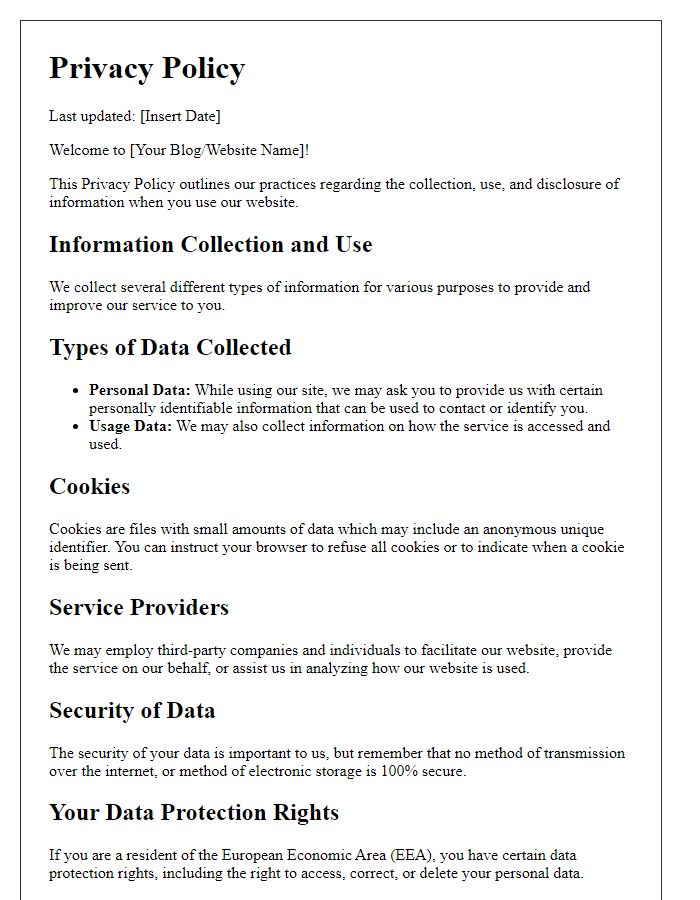

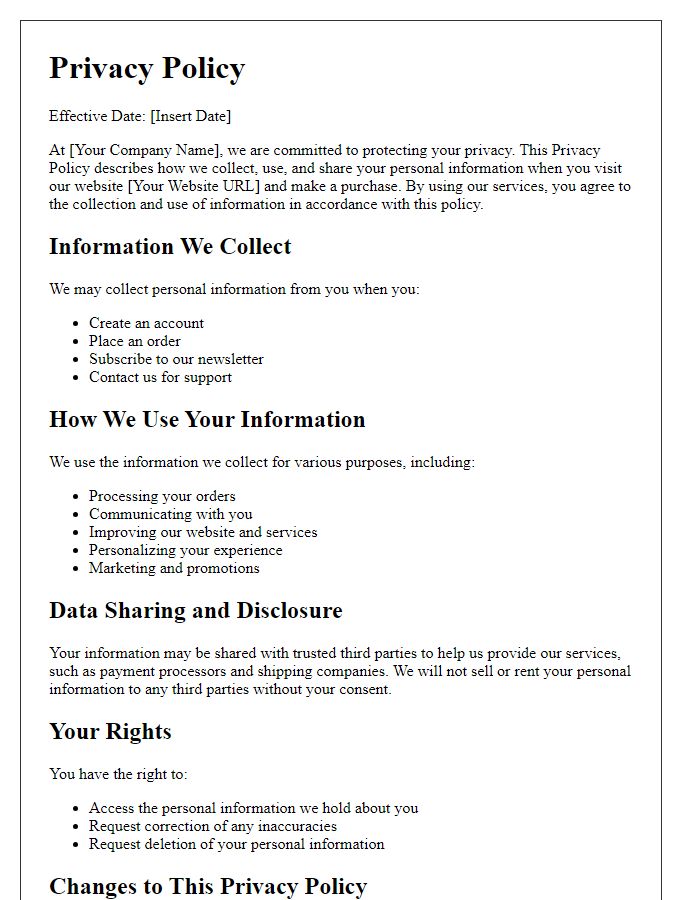
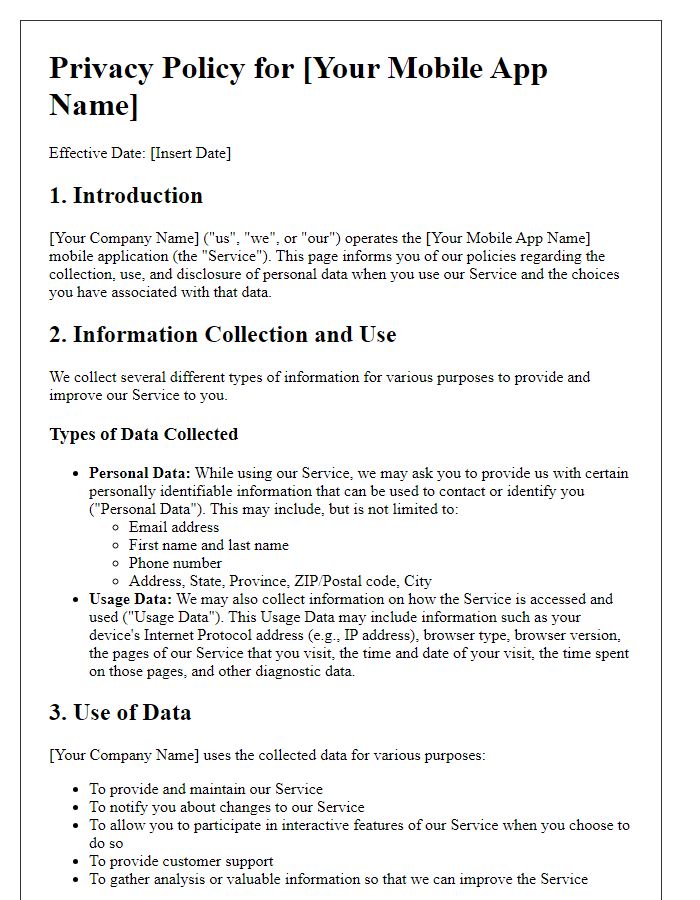
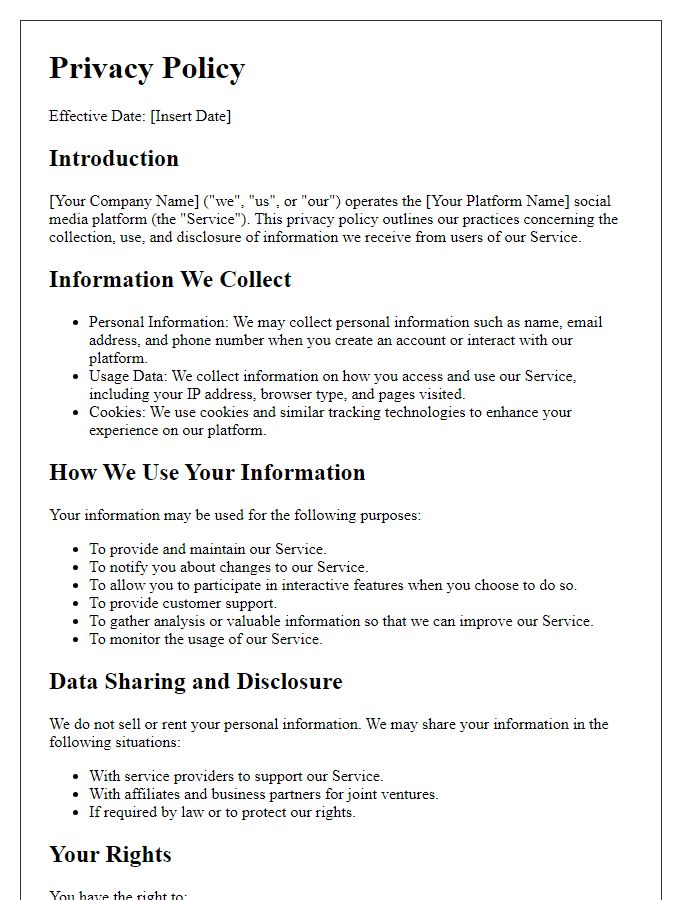
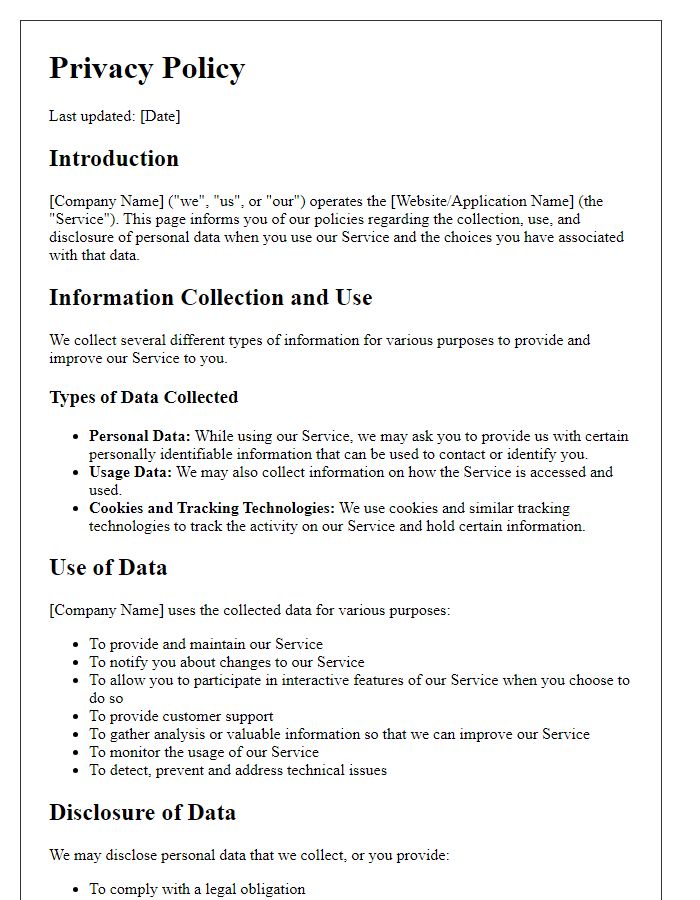
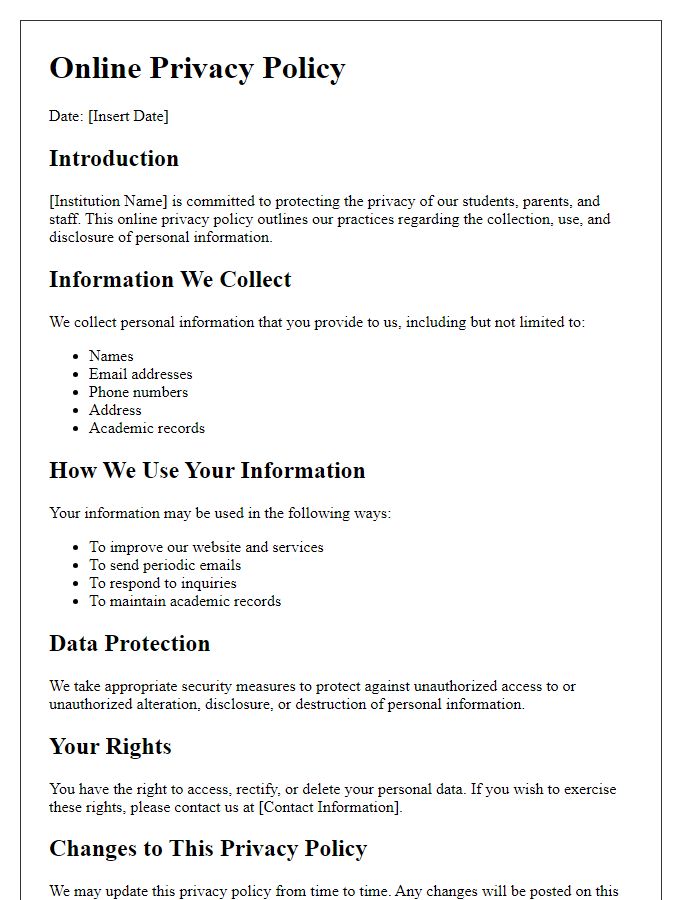
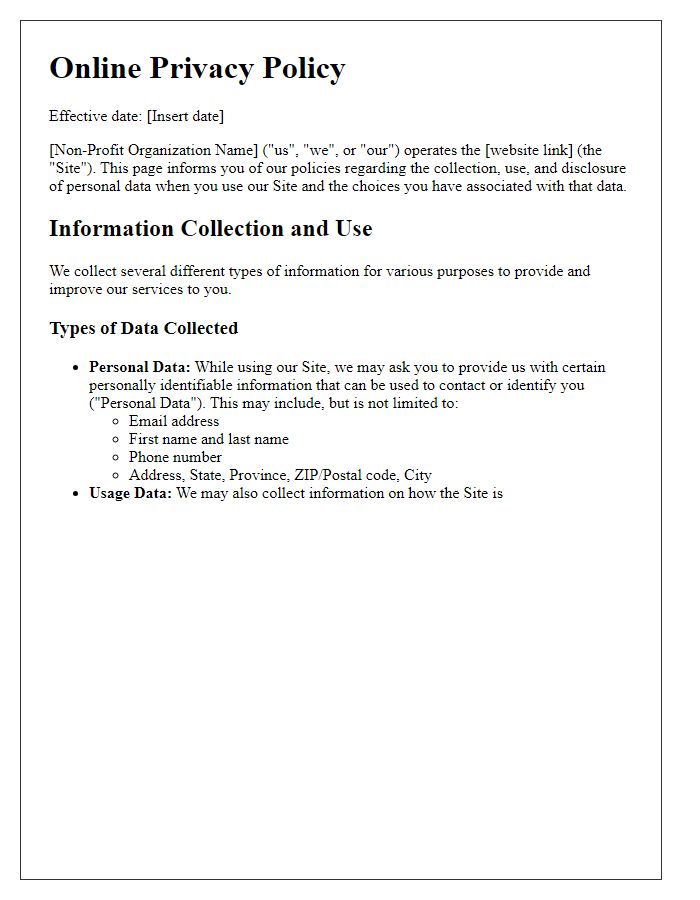
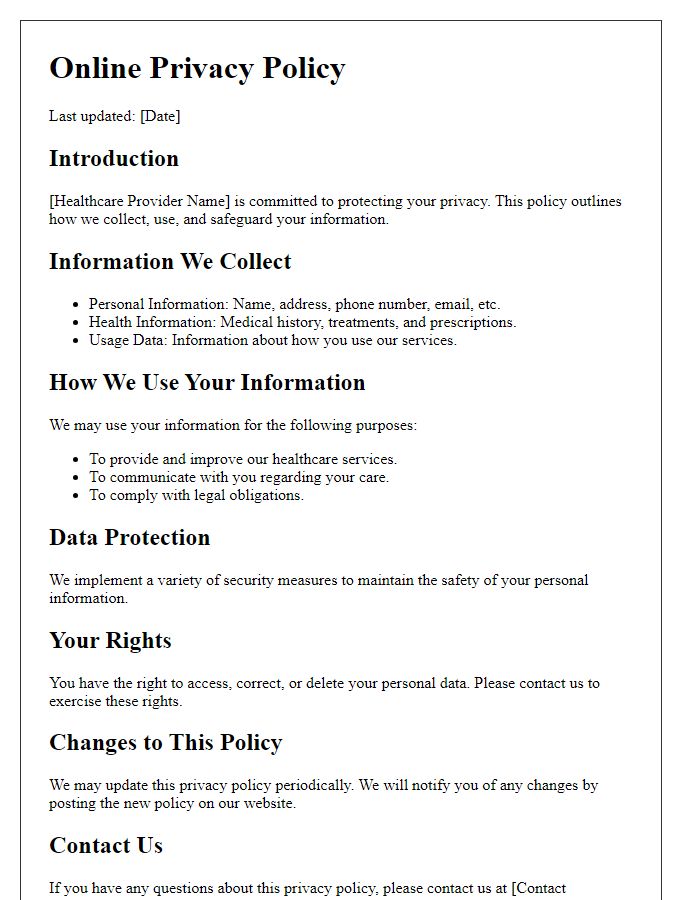
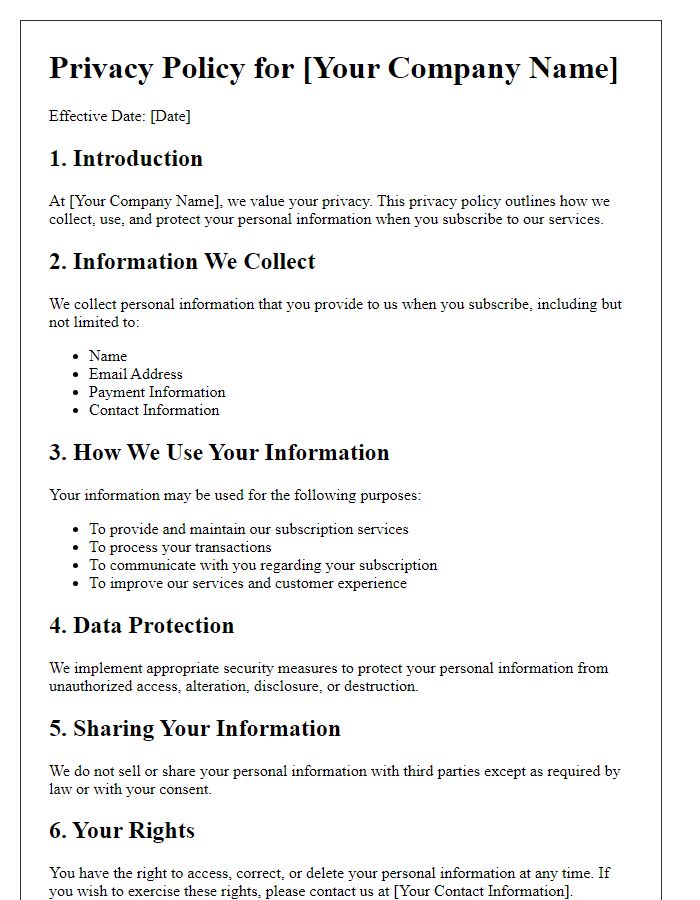
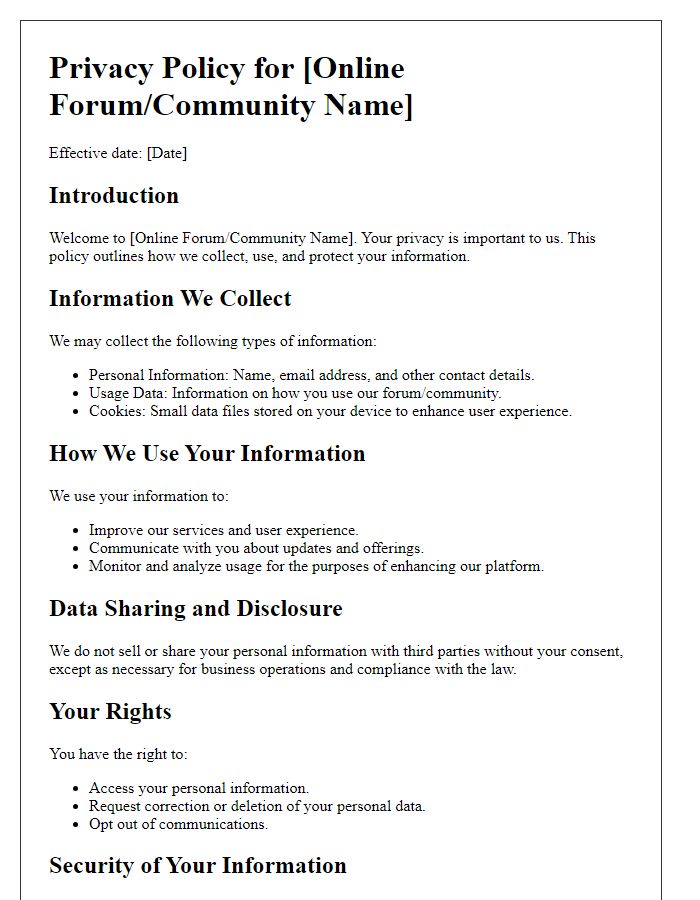


Comments